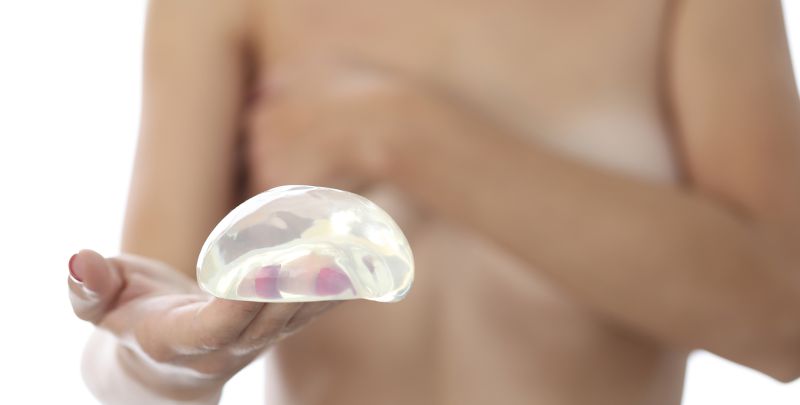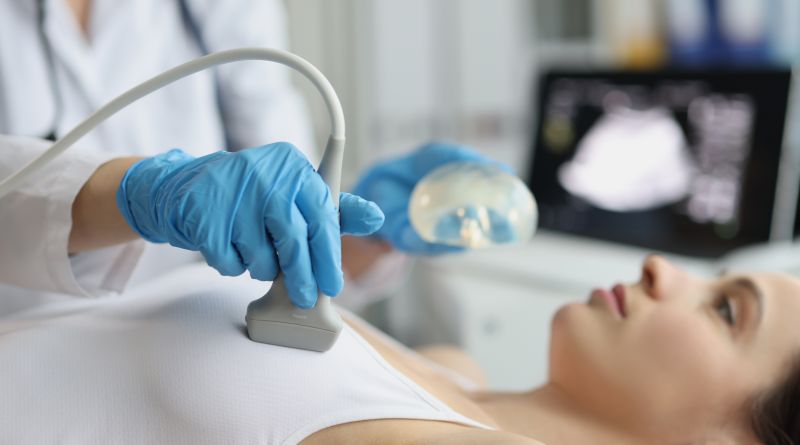Saline Breast Implant Removal in Dallas

There are numerous reasons why someone might choose to have their saline breast implants removed, including changes in personal preference, cosmetic concerns, or problems with the implant such as a deflated or ruptured saline breast implant. As with the removal of other types of breast implants, saline breast implants can be removed with a variety of different methods. Azouz Plastic and Cosmetic surgery includes multiple board certified plastic surgeons who remove saline implants with a variety of combined techniques including the “scarless” breast lift, total capsulectomy, implant exchange and combination cosmetic procedures. Common cosmetic surgeries that are combined with removal of saline implants include blepharoplasty, mommy makeover, liposuction, and tummy tuck.
What Should You Do if a Saline Implant Deflates?
A deflated saline implant presents a unique problem in that there is often a sudden and dramatic decrease in breast size while not being harmful to the patient. Though a deflated saline implant is theoretically harmless as the saline solution inside is not-dangerous to the body, it can cause cosmetic deformity, anxiety and a potential space for infection. The need to remove saline implants can be elective or urgent, especially if a woman notices that her saline implant has deflated. Saline implants will typically deflate over a period of hours if there is compromise to the outer shell. It is not advised that a patient deflate their own implant as this can lead to scarring, infection and deformity. Seeking consultation with a Plastic Surgeon who has experience in implant removal should be done as soon as possible if a breast implant deflates.
Azouz Plastic and Cosmetic Surgery offers urgent removal with or without replacement of deflated saline implant in Dallas.
What are the Most Common Reasons for Saline Breast Implant Removal?
Many women will decide to remove their saline breast implants for a variety of reasons. Breast implants are classified into two types: saline and silicone. Saline breast implants are filled with a sterile saltwater solution, whereas silicone breast implants are filled with silicone. The outer shell of both types of implants is made of silicone. Saline implants will deflate when ruptured whereas silicone filled implants will slowly leak.
There are numerous reasons why someone might decide to have their saline breast implants removed. Some of the most common reasons are:
- Personal preference changes: Some women may decide that they no longer want breast implants, either because their personal preferences have changed or because they feel that their breast implants no longer fit their body type.
- Cosmetic concerns: Some women may be dissatisfied with the appearance of their breast implants, such as if they believe the implants are too large, too small, or too unnatural.
- Medical complications: Some women may experience complications with their saline implants, such as rupture, leakage, or capsular contracture, which can cause pain, discomfort, and other issues.
What Are the Signs of a Saline Breast Implant Rupture?
The most obvious symptom of a saline breast implant rupture is a dramatic change in breast size. Because saline implants are filled with a sterile saltwater solution, the solution will leak out if the implant ruptures, causing the breast to shrink and “deflate”.
Changes in breast shape: If one breast becomes deformed or loses its symmetry with the other, this could be a symptom of a rupture. Because of the loss of the saline fluid, the affected breast may appear flatter, saggier, or malformed.
Pain or discomfort in the afflicted breast: Some women may suffer pain or discomfort in the affected breast. This could be due to the implant altering position or the abrupt loss of volume.
How Does Saline Breast Implant Removal Work?
Saline breast implant removal is typically performed with local anesthesia and moderate to deep sedation, which means the patient is asleep during the procedure but does not have the need for a ventilator breathing for them. Dr. Azouz will make an incision in the breast, typically along the same incision line as the original breast augmentation surgery or through a camouglaged incision. This allows for “scarless” technique meaning no new scars usually need to be added to the breast or the scar is concealed in an area where it can be “camouflaged”. The implant is then carefully removed from the breast pocket, as is any scar tissue that has formed around it.
A breast lift or other procedure may be recommended if the patient wishes to have their breast size restored to its pre-augmentation size. If the patient wants new breast implants, Dr. Azouz can perform a breast revision procedure to replace the old implants with new ones either silicone or saline. Dr. Azouz is commonly able to perform a “mini breast lift” at the time of saline breast implant removal for patients who have developed minor sagging with their saline breast implants.
What Is the Recovery Process Like after Saline Breast Implant Removal?
The recovery time after removing a saline breast implant will vary depending on the individual patient and the specifics of their surgery. In general, patients have a small amount of discomfort for a few days following surgery. To relieve and minimize discomfort, Dr. Azouz will prescribe specialized pain medications and will place medication which minimizes bruising and swelling after surgery.
For several weeks after surgery, patients are usually advised to avoid strenuous activity and heavy lifting. To ensure optimal healing and recovery, it is also important to avoid smoking and to follow any other instructions given by Dr. Azouz. Most patients can return to computer or office work in just a few days after removal of their saline breast implants.
Use of Ultrasound and MRI Detecting a Saline Breast Implant Rupture
Imaging is not usually necessary to detect a saline breast implant rupture as most implant ruptures or deflations can be detected through physical examination. Ultrasound will usually be most helpful in showing collapse of the implant, rippling of the implant or slow leaks. Ultrasound and MRI are generally more helpful in detecting silicone implant ruptures rather than saline leaks. Some patients have a breast implant rupture detected on routine breast imaging. Any suggestion of a breast implant rupture should be evaluated by a plastic surgeon.

Removing Your Saline Implants in Dallas
Whether you are dealing with medical issues, changing personal preferences, or cosmetic concerns, it is critical to consult with an experienced plastic surgeon like Dallas based Dr. Azouz. Urgent consultation is available with either an in person or virtual appointment by calling (972) 702-8888.
Posted on behalf of
